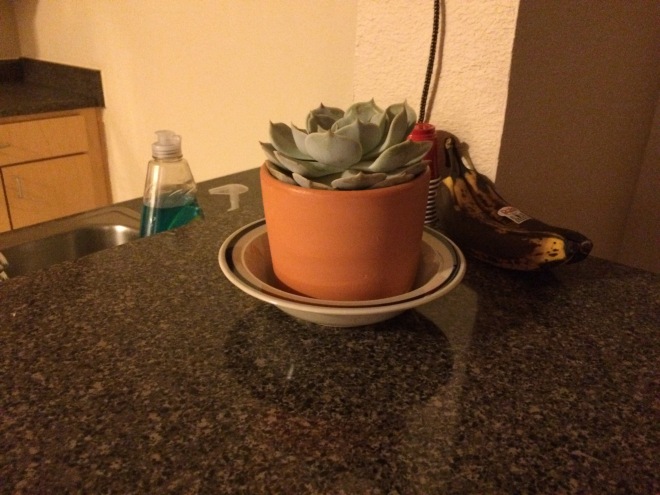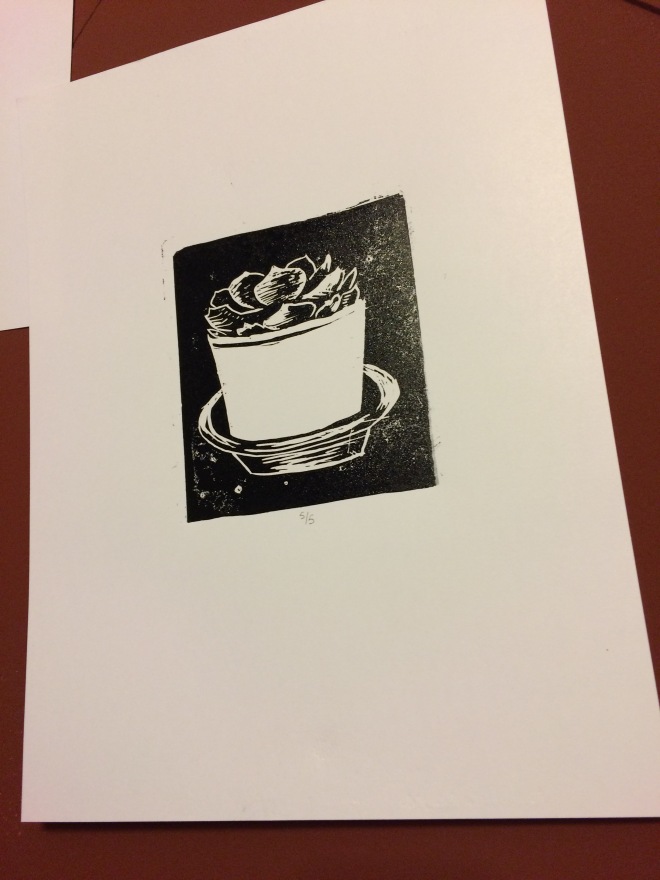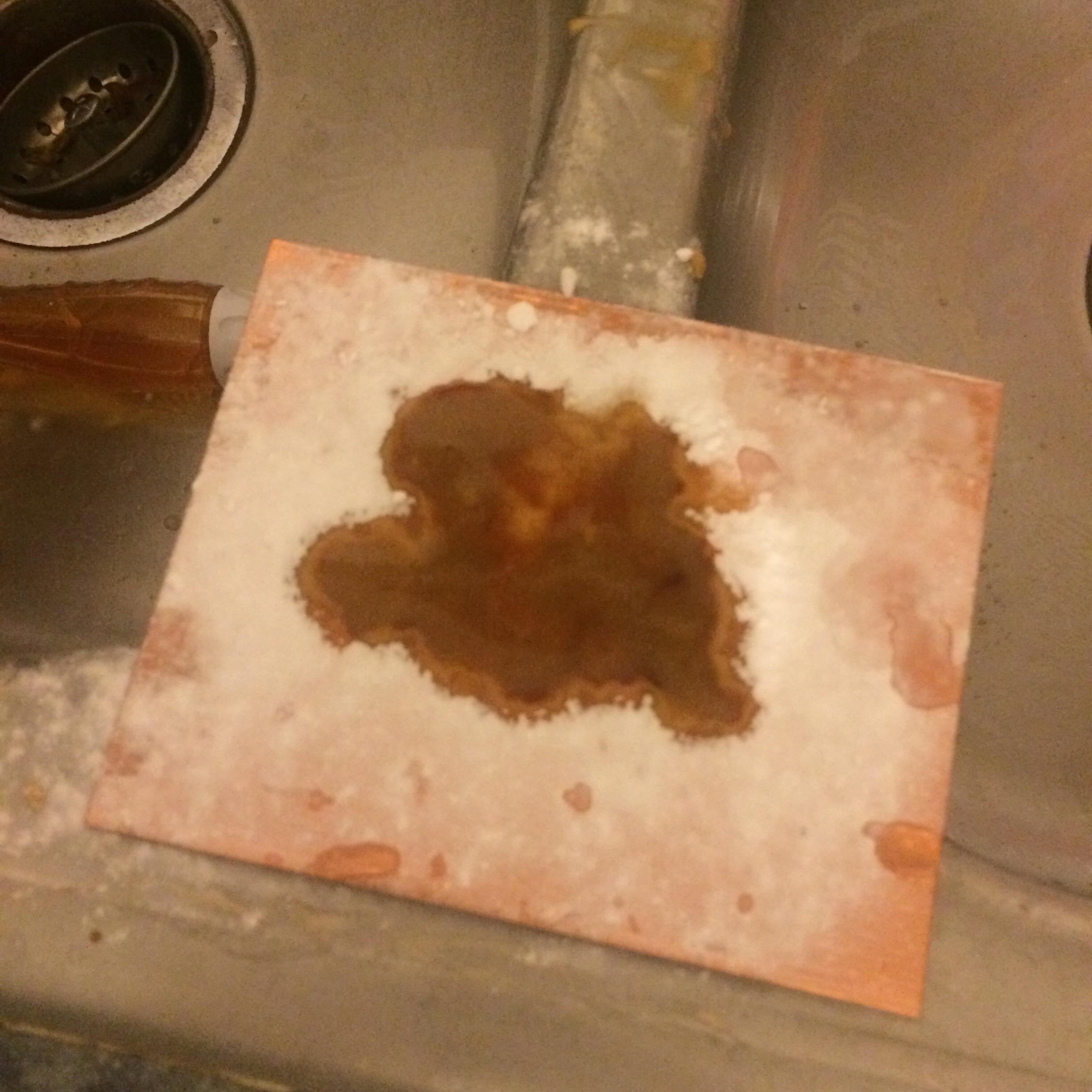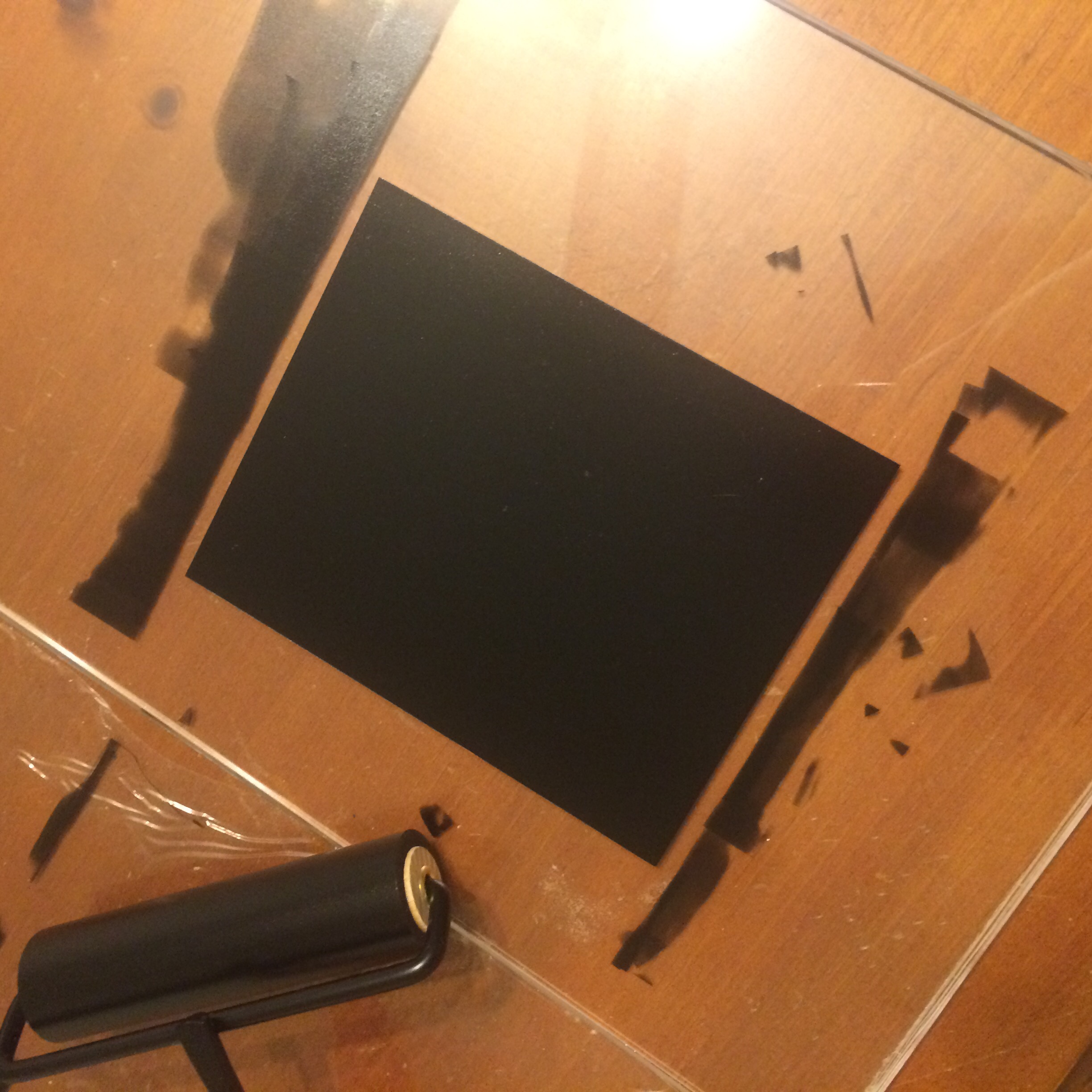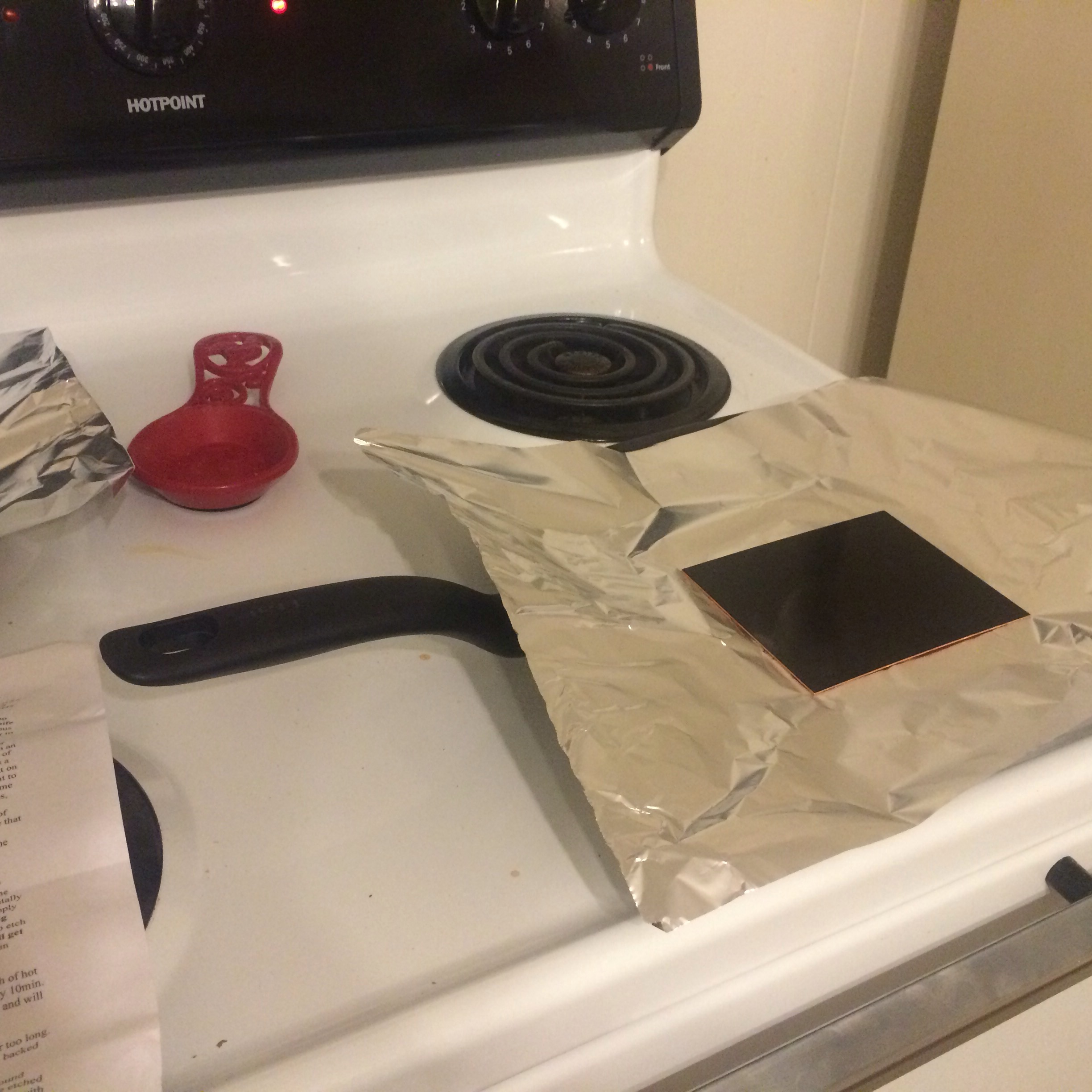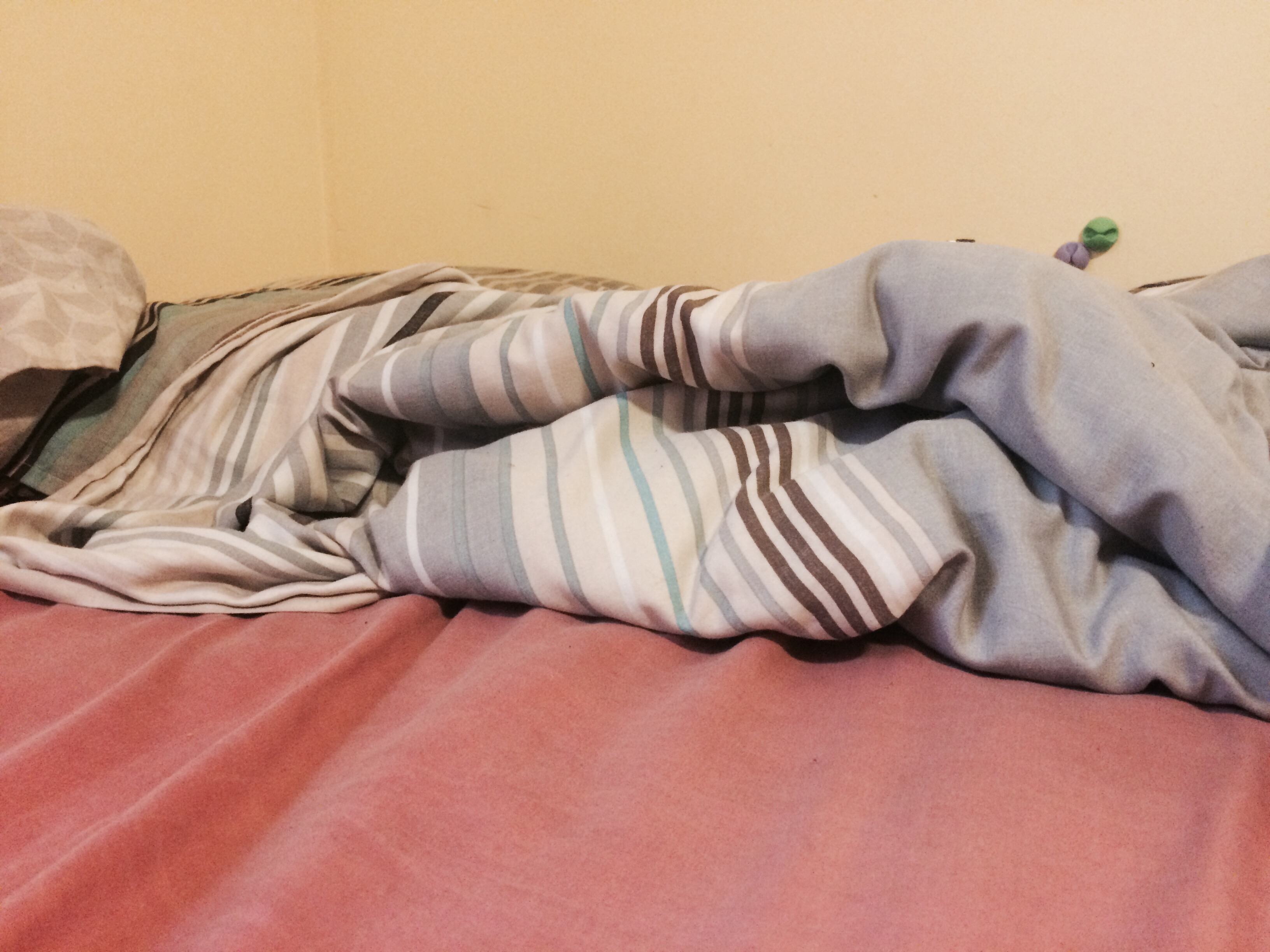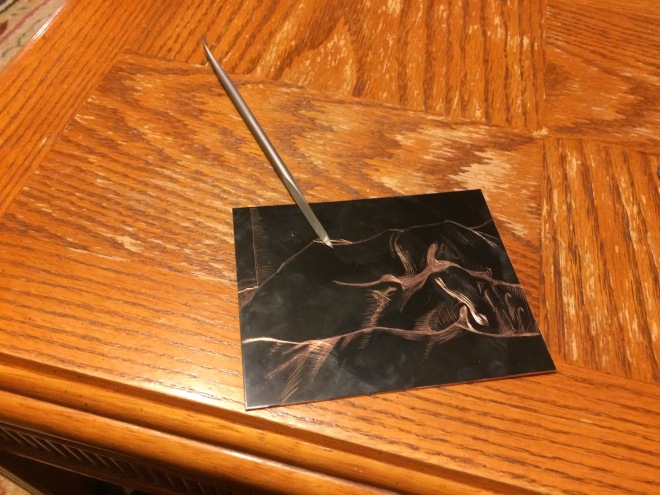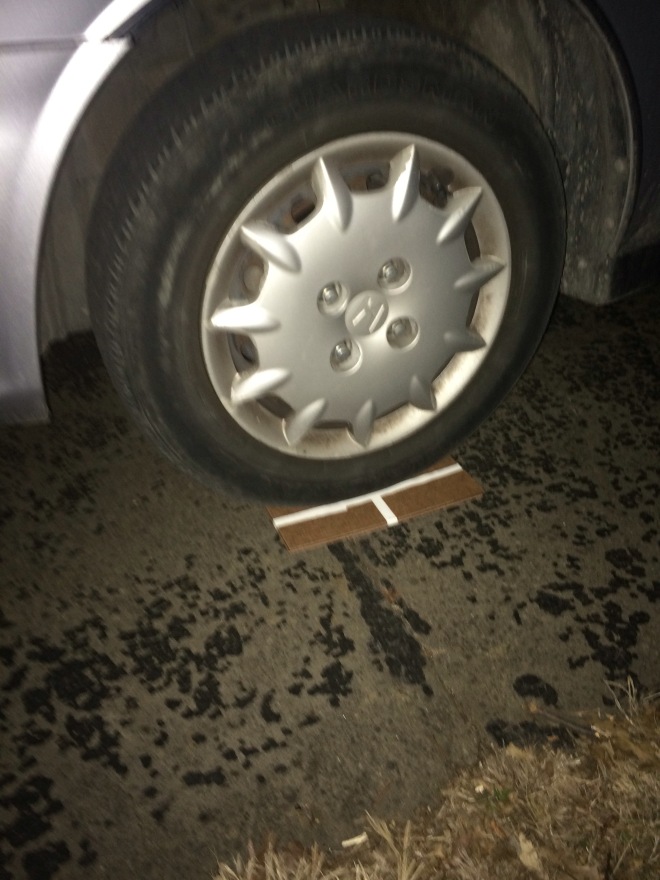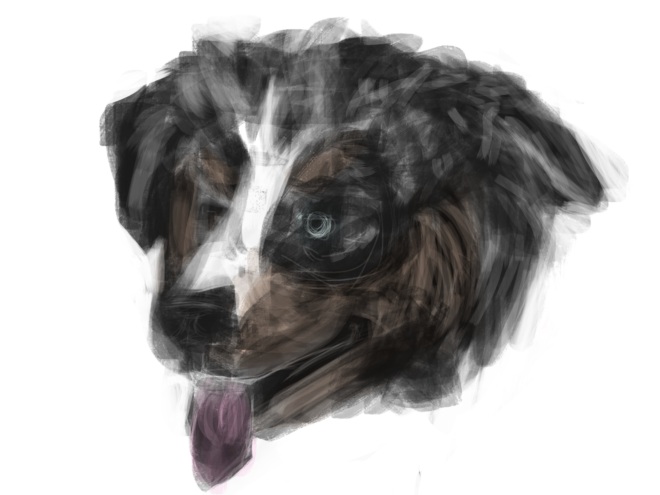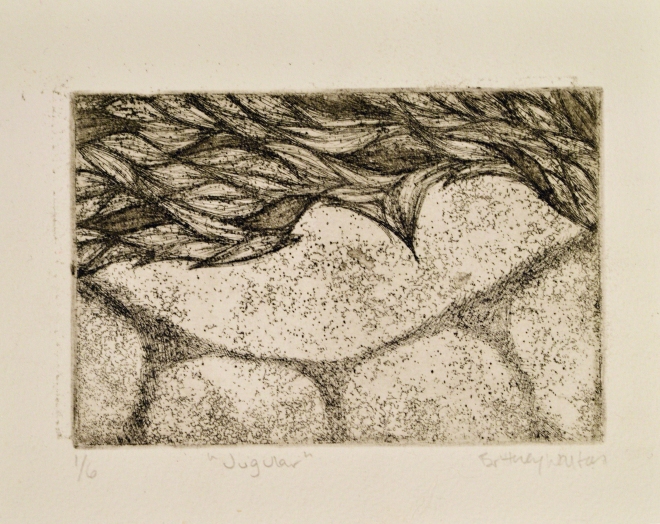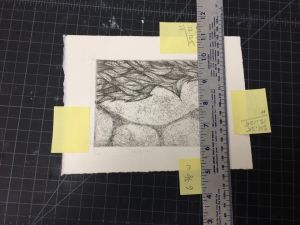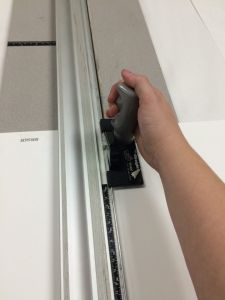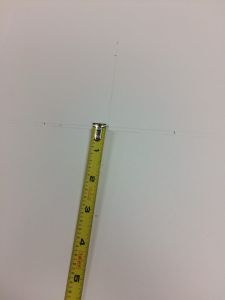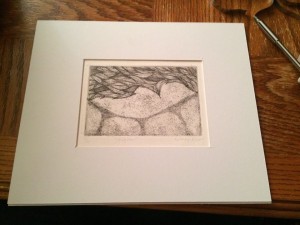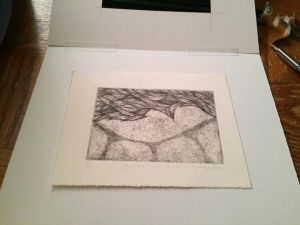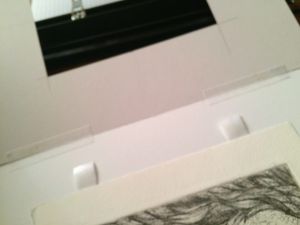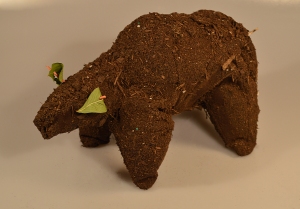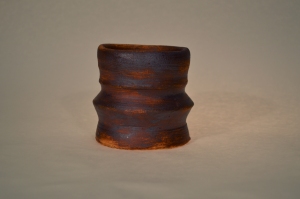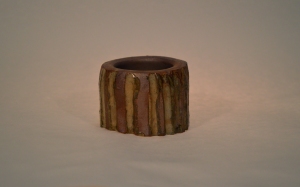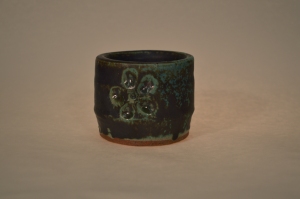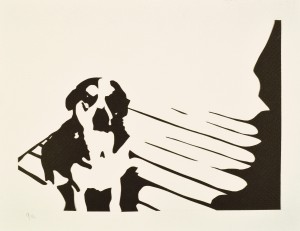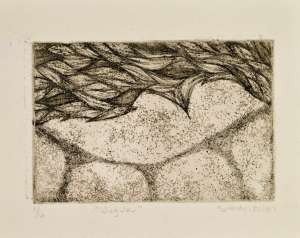If you are having a show in a gallery or museum is is often necessary to ship your work to them through the mail. It is important that you package the work so that it makes it there in one piece and in a way that it is easy for gallery staff to repackage it to return it.
First you need a box that is big enough to fit the piece or pieces you are going to ship. For this demonstration I chose a 14″ x 14″ x 14″ box. You need to assemble the box and use plenty of tape across the bottom to ensure that it will hold together reliably. I taped across the seam 3 times, once on either side of that and taped the edges to seal the bottom completely. We also need acceptable packing materials such as bubble wrap and foam, held in place with packing tape as it is more reliable than painters tape. Do not use packing peanuts as they have a tendency to shift around in the box too much to be reliable and they are also a pain to gallery staff.

Next you need to package the work. There are different methods for framed 2d pieces and 3d pieces, but both boil down to making sure that there is plenty of padding around the piece so that it is not bouncing around in the box and all the weak points are protected.
For a framed piece the most important thing to remember is that the corners are the part that is most likely to get dinged. We want to protect the whole work with special attention to the corners. Wrap the bubble wrap around the piece two or three times in each direction, taping it on, but ensuring that no tape comes into contact with your piece. Then take small sheets of bubble wrap, fold them several times and tape them onto the corners as shown.
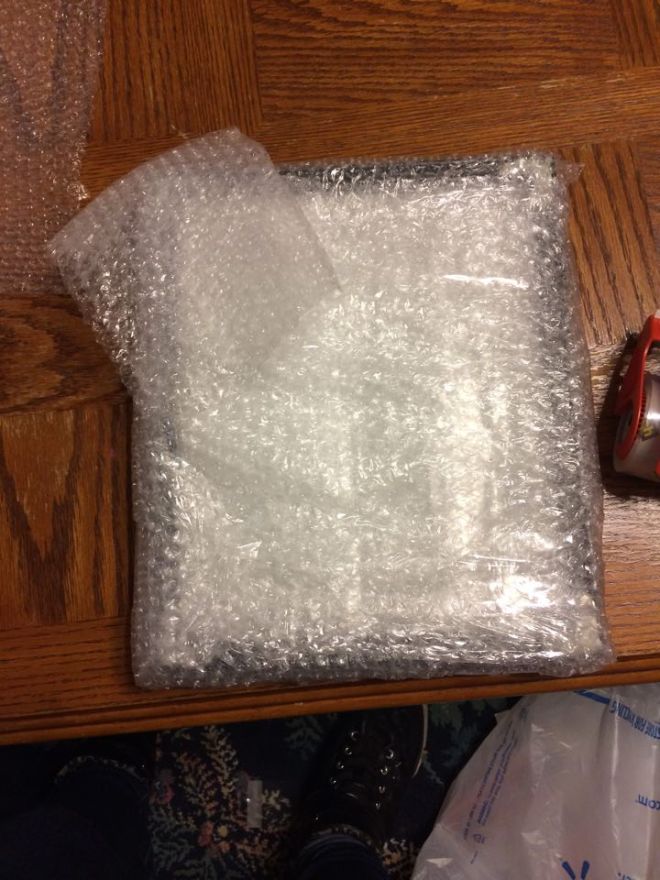
You can gently tap the piece on the table and hear if there is enough padding. If it bounces slightly and you hear no thud of the actual frame hitting the table, your piece should be well protected.
For three dimensional pieces you want to gently stuff any cavity with either news paper or bubble wrap. The you will wrap it in bubble wrap just as with the 2D piece. You want to wrap it enough times that you cannot feel the piece through the bubble wrap. You can do the same test as you did with the 2D piece above to see if you have used enough. Make sure any delicate parts are especially protected, such as edges and corners.
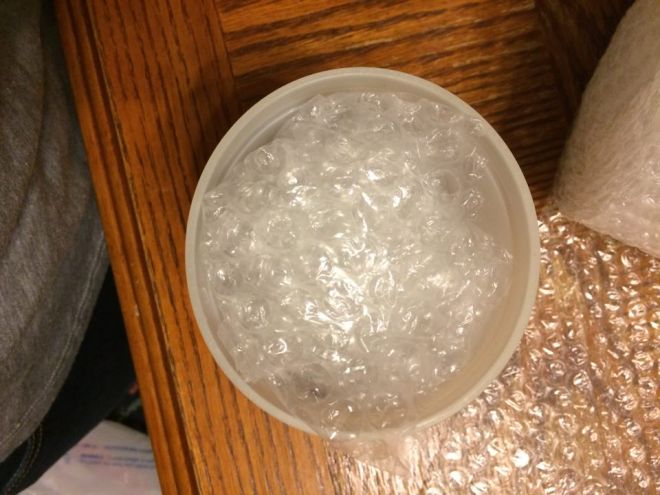
Once you have your pieces wrapped individually well enough that you are confident, it is time to assemble the package. Place padding in the bottom of the box first and then place your first piece inside. Fill and empty space around the piece with foam, bubble wrap or paper to make sure that it is not able to move around in the box at all. Put another layer of bubble, paper or foam on top of the piece as well. Then you can either close the box or put a layer of cardboard and create another section for another piece.
On top of your layer of cardboard, you’ll want to treat is as if it is a new box and repeat the process above for a second piece.

Once everything is in the box, you’ll want to provide some information for the gallery staff. Provide a sheet that has your name, address and phone number, a list of the box contents, packaging and display instructions and to whom you are addressing it. place this in an envelope along with paid return shipping.
Tape up the box the same way you did for the bottom of the box and mark which side is the top. Now your work should be ready for a safe journey to and from its destination.
